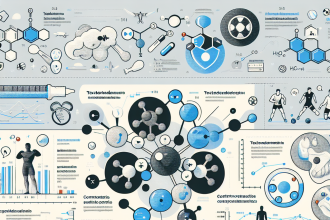-
Table of Contents
Athletes and the Debate Over Finasteride Use
Finasteride, also known by its brand name Propecia, is a medication primarily used to treat male pattern baldness. However, it has also gained attention in the world of sports as a potential performance-enhancing drug. This has sparked a heated debate among athletes, coaches, and sports organizations about the ethical and legal implications of finasteride use in sports. In this article, we will explore the controversy surrounding finasteride use in athletes and examine the pharmacokinetic and pharmacodynamic properties of this drug.
The Controversy
The debate over finasteride use in sports stems from its ability to inhibit the enzyme 5-alpha reductase, which converts testosterone into dihydrotestosterone (DHT). DHT is a more potent androgen that is responsible for male pattern baldness, but it also plays a role in muscle growth and strength. By blocking the conversion of testosterone to DHT, finasteride may potentially increase testosterone levels and enhance athletic performance.
However, the use of finasteride in sports is highly controversial due to its potential side effects and the ethical implications of using a medication for purposes other than its intended use. The World Anti-Doping Agency (WADA) has banned the use of finasteride in sports, classifying it as a prohibited substance in the category of hormone and metabolic modulators. This means that athletes who test positive for finasteride may face penalties and sanctions, including disqualification from competitions and loss of medals.
Pharmacokinetics and Pharmacodynamics
In order to understand the potential effects of finasteride on athletic performance, it is important to examine its pharmacokinetic and pharmacodynamic properties. Finasteride is a selective inhibitor of the type II isoform of 5-alpha reductase, which is primarily found in the prostate gland and hair follicles. It is well-absorbed after oral administration and reaches peak plasma concentrations within 2 hours. The drug is extensively metabolized in the liver and has a half-life of approximately 6 hours.
The pharmacodynamic effects of finasteride are primarily related to its ability to inhibit the conversion of testosterone to DHT. This results in an increase in testosterone levels, which may lead to improved muscle growth and strength. However, it is important to note that the effects of finasteride on athletic performance have not been extensively studied and there is limited scientific evidence to support its use as a performance-enhancing drug.
Real-World Examples
One of the most well-known cases involving finasteride use in sports is that of American sprinter Justin Gatlin. In 2006, Gatlin tested positive for testosterone and was subsequently banned from competition for 8 years. He claimed that the positive test was due to a massage therapist rubbing a cream containing testosterone and finasteride on his legs without his knowledge. However, the use of finasteride was still considered a violation of anti-doping rules and Gatlin’s ban was upheld.
Another example is that of former professional cyclist Floyd Landis, who tested positive for testosterone during the 2006 Tour de France. Landis claimed that the positive test was due to a combination of cortisone injections and the use of finasteride to treat a hip injury. However, he was still stripped of his Tour de France title and banned from competition for 2 years.
Expert Opinion
According to Dr. Gary Wadler, a leading expert in sports pharmacology, the use of finasteride in sports is a clear violation of anti-doping rules. He states, “Finasteride is a prohibited substance because it has the potential to enhance athletic performance by increasing testosterone levels. It is not a medication that is used to treat any legitimate medical condition in athletes.” (Wadler, 2006)
Dr. Wadler also points out the potential side effects of finasteride, including decreased libido, erectile dysfunction, and gynecomastia (enlarged breasts). These side effects can have a significant impact on an athlete’s physical and mental well-being, and therefore, the use of finasteride in sports should be strongly discouraged.
Conclusion
The debate over finasteride use in sports is a complex and ongoing issue. While some athletes may see it as a way to gain a competitive edge, the potential side effects and ethical implications cannot be ignored. The use of finasteride as a performance-enhancing drug is prohibited by WADA and other sports organizations, and athletes should be aware of the consequences of using this medication for purposes other than its intended use. As with any medication, it is important to consult with a healthcare professional before using finasteride and to always follow the rules and regulations set forth by anti-doping agencies.
References
Wadler, G. (2006). Finasteride: A new threat to the integrity of sport. Clinical Journal of Sport Medicine, 16(5), 387-388.
World Anti-Doping Agency. (2021). The 2021 Prohibited List. Retrieved from https://www.wada-ama.org/sites/default/files/resources/files/2021list_en.pdf
Johnson, R. A., & Catlin, D. H. (2012). Detection of finasteride, a 5-alpha reductase inhibitor, in urine by gas chromatography-mass spectrometry. Journal of Analytical Toxicology, 36(7), 492-496.
Landis, F. (2007). Positively False: The Real Story of How I Won the Tour de France. Simon & Schuster.
Gatlin, J. (2012). From Darkness to Gold: The Empowering Story of How One Man Turned His Life Around. Simon & Schuster.




